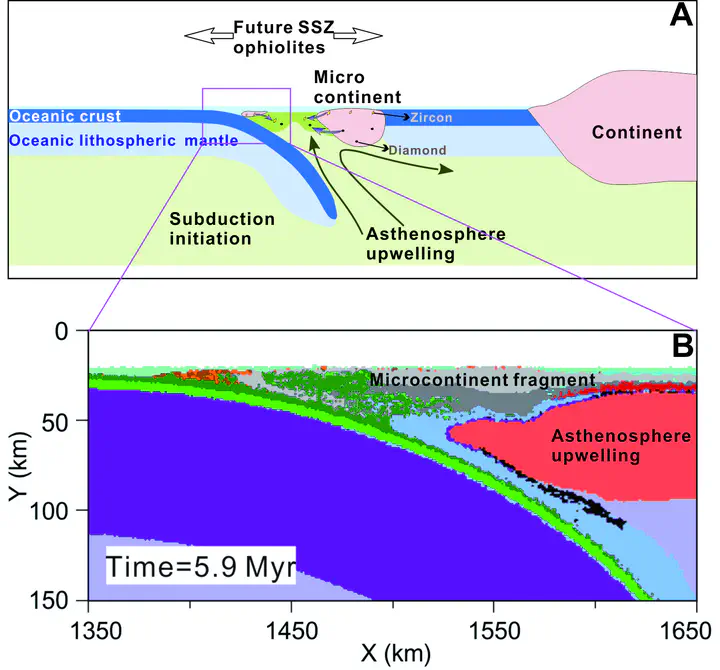Do microcontinents nucleate subduction initiation?
 (A) Cartoon showing the origin of crustal materials and ultrahigh-pressure minerals in supra–subduction zone (SSZ) ophiolites. (B) Model M2 snapshot at 5.9 m.y. The purple and blue arrows represent the left and right directions of the subduction initiation, respectively.
(A) Cartoon showing the origin of crustal materials and ultrahigh-pressure minerals in supra–subduction zone (SSZ) ophiolites. (B) Model M2 snapshot at 5.9 m.y. The purple and blue arrows represent the left and right directions of the subduction initiation, respectively.Abstract
Subduction initiation is a pivotal process in plate tectonics. Models of subduction initiation include the collapse of passive margins, oceanic transform faults, inversion of oceanic core complexes, and ridge failure but have ignored the potential effects of continental crust relicts within the oceanic crust. In this paper, we explore the role of microcontinents on subduction initiation through two-dimensional thermo-mechanical numerical modeling. We consider three scenarios with variable ages of oceanic crust surrounding the microcontinent and parametrically examine the microcontinent characteristics (size, crustal thickness, thermal gradient, and rheology), oceanic plate age, and convergence rates. Results suggest that moderate-size (≥300 km) microcontinents can nucleate subduction initiation at the junction between continental and oceanic plates. A large part of the microcontinent would be dragged into the subduction zone, and the subsequent asthenosphere upwellings would incorporate part of the microcontinent. Our numerical models add a new hypothetical scenario for subduction initiation, especially for those places where a young and buoyant plate subducts beneath an older and denser oceanic plate. Moreover, they can explain the origin of exotic crust materials and ultrahigh-pressure minerals in supra–subduction zone ophiolites.